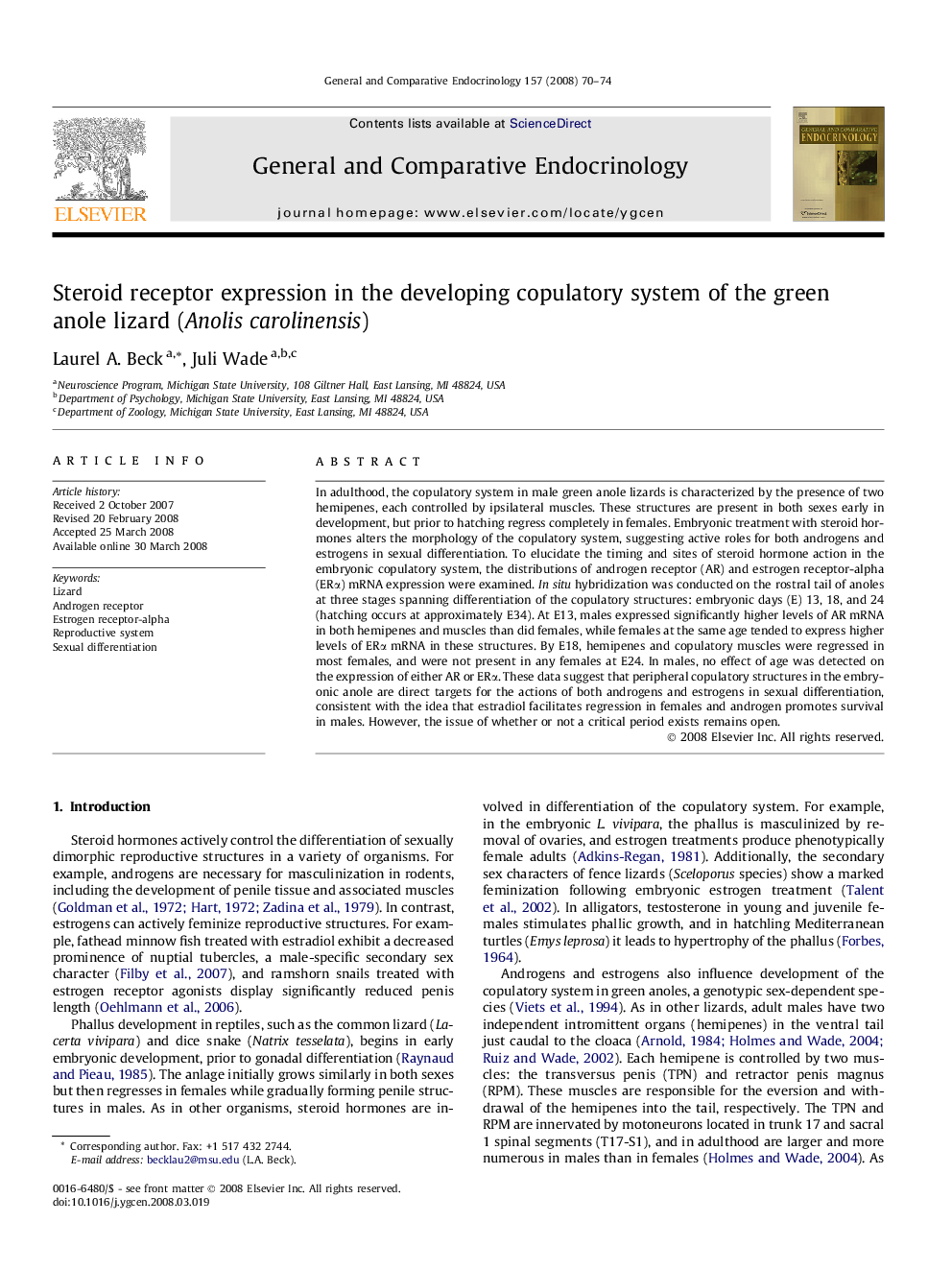| Article ID | Journal | Published Year | Pages | File Type |
|---|---|---|---|---|
| 2801867 | General and Comparative Endocrinology | 2008 | 5 Pages |
In adulthood, the copulatory system in male green anole lizards is characterized by the presence of two hemipenes, each controlled by ipsilateral muscles. These structures are present in both sexes early in development, but prior to hatching regress completely in females. Embryonic treatment with steroid hormones alters the morphology of the copulatory system, suggesting active roles for both androgens and estrogens in sexual differentiation. To elucidate the timing and sites of steroid hormone action in the embryonic copulatory system, the distributions of androgen receptor (AR) and estrogen receptor-alpha (ERα) mRNA expression were examined. In situ hybridization was conducted on the rostral tail of anoles at three stages spanning differentiation of the copulatory structures: embryonic days (E) 13, 18, and 24 (hatching occurs at approximately E34). At E13, males expressed significantly higher levels of AR mRNA in both hemipenes and muscles than did females, while females at the same age tended to express higher levels of ERα mRNA in these structures. By E18, hemipenes and copulatory muscles were regressed in most females, and were not present in any females at E24. In males, no effect of age was detected on the expression of either AR or ERα. These data suggest that peripheral copulatory structures in the embryonic anole are direct targets for the actions of both androgens and estrogens in sexual differentiation, consistent with the idea that estradiol facilitates regression in females and androgen promotes survival in males. However, the issue of whether or not a critical period exists remains open.
